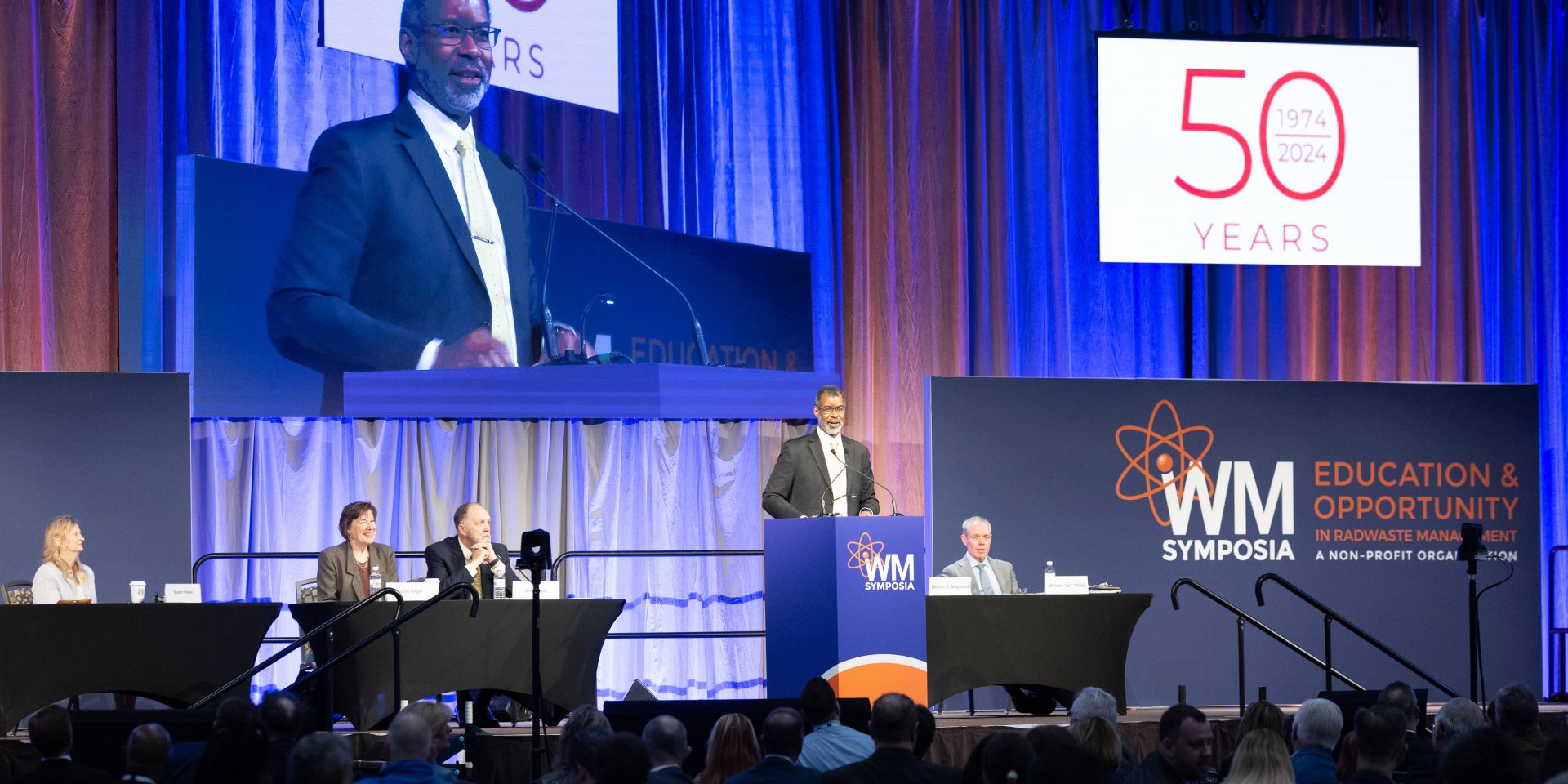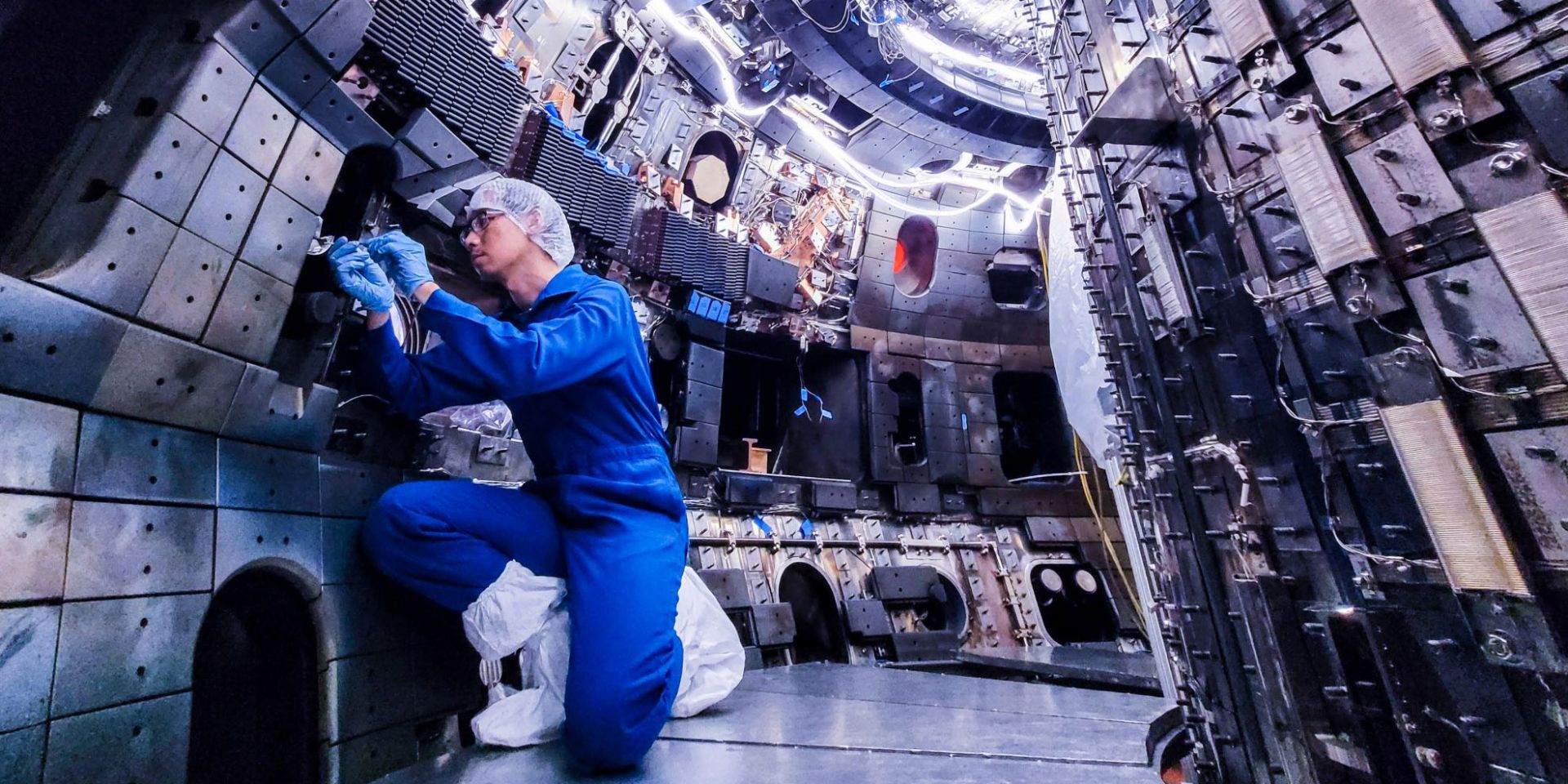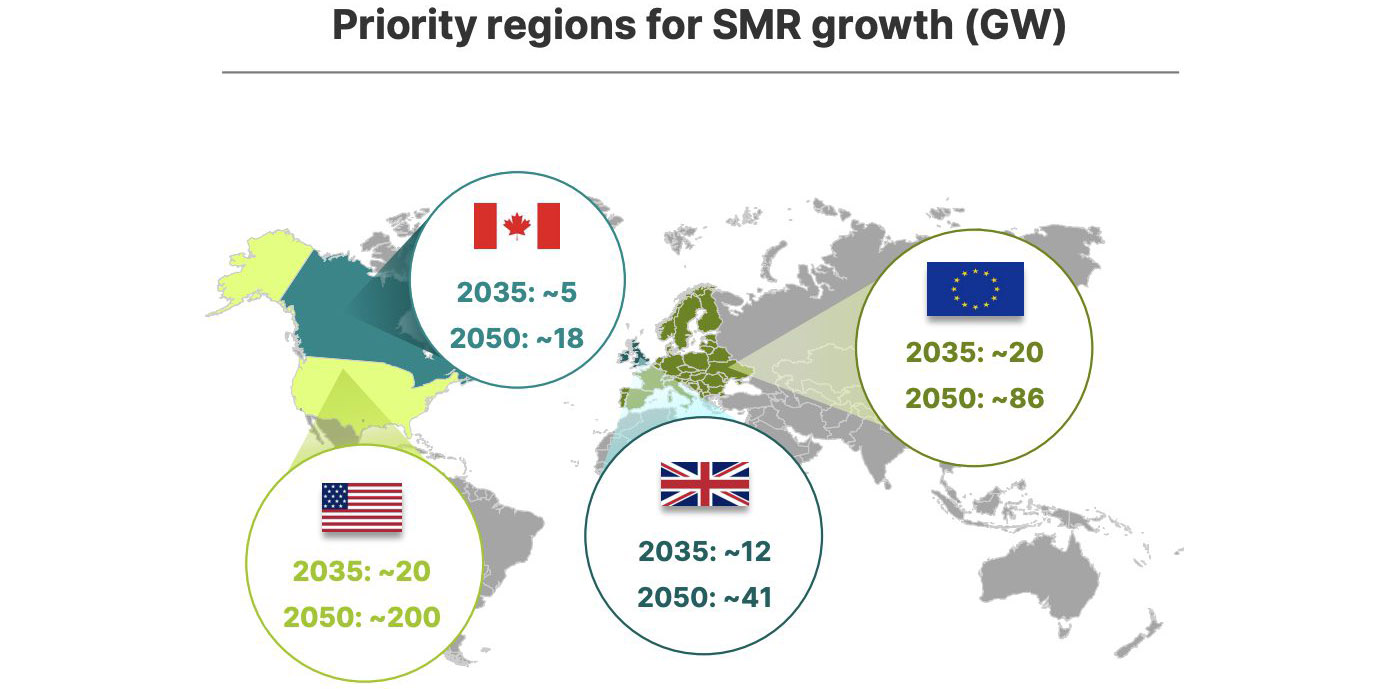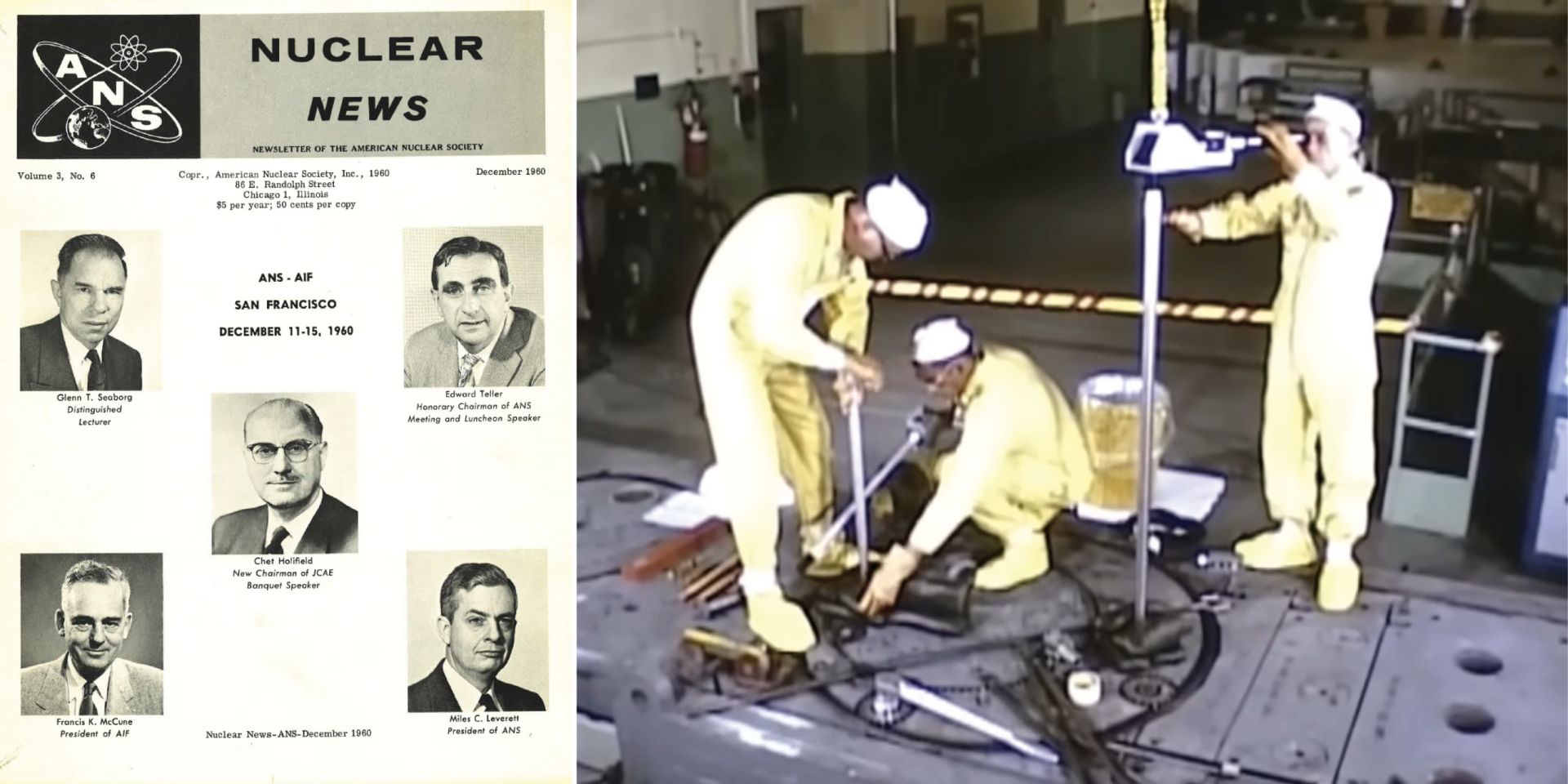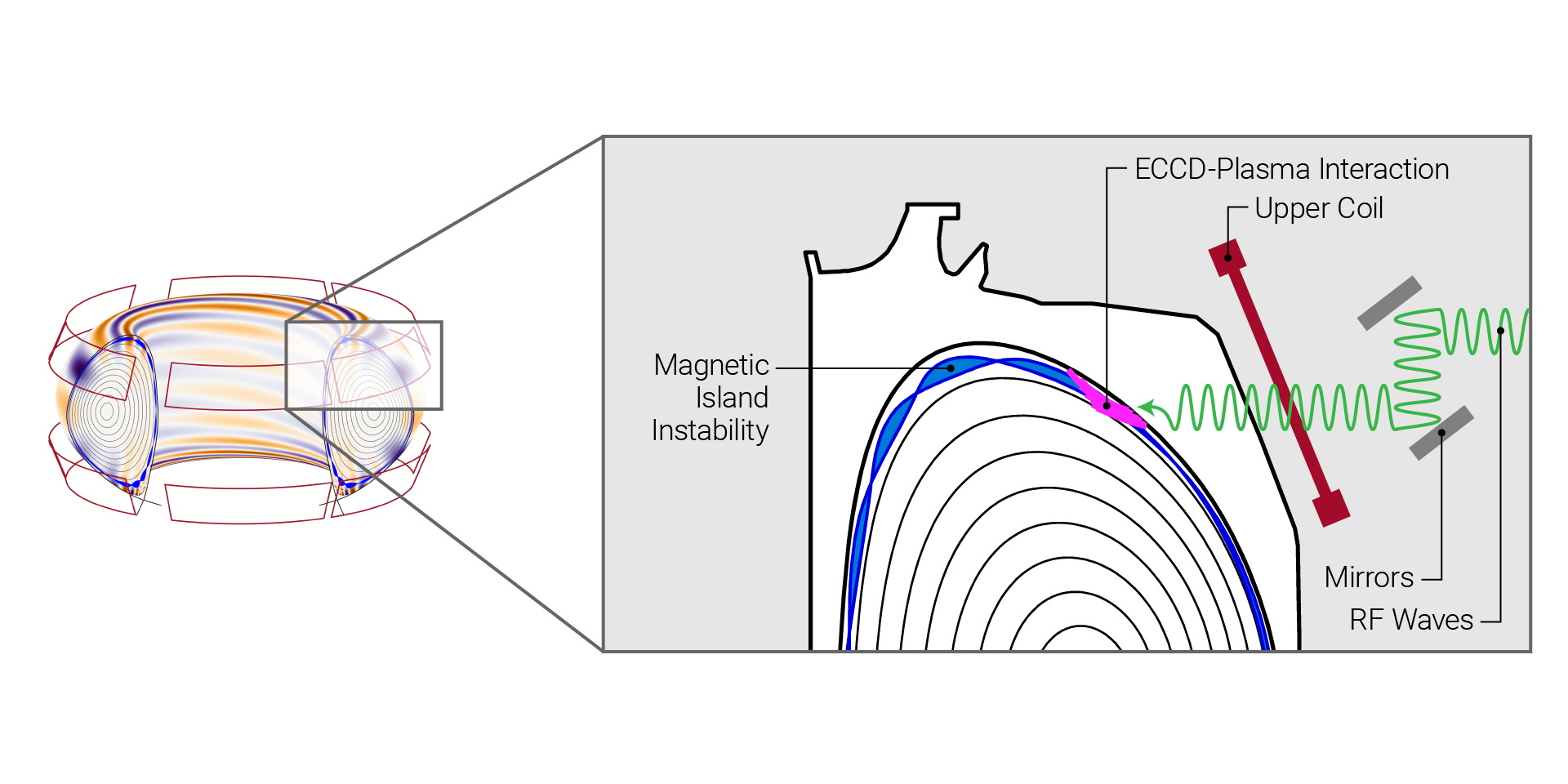Oklo Inc. (Image: Gensler)
Fast reactor developer Oklo, which recently went public on the New York Stock Exchange, announced on May 13 that it has signed a memorandum of understanding with Atomic Alchemy to cooperate on the production of radioisotopes for medical, energy, industry, and science applications.
Uranium yellowcake is used in the preparation of uranium fuel that is used in nuclear reactors. (Photo: DOE)
On May 13, President Biden signed the Prohibiting Russian Uranium Imports Act, unlocking the $2.72 billion that Congress conditionally appropriated in March to increase production of low-enriched uranium (LEU) and high-assay low-enriched uranium (HALEU).
The OECD NEA’s William Magwood addresses the plenary audience of the 2024 Waste Management Conference in Phoenix. (Photo: WM Symposia)
This year marked the 50th anniversary of Waste Management Symposia’s Waste Management Conference, held March 10–14 in Phoenix, Ariz. The event has grown significantly since the first Waste Management Conference in 1974, which attracted about 200 attendees. This year’s conference saw a record attendance of around 3,300 people from more than 20 different countries and boasted 235 technical sessions and 89 exhibitors.
Concept art of Oklo's Aurora Powerhouse microreactor. (Image: Gensler)
After completing its business combination with AltC Acquisition Corp, Oklo Inc. began trading on the New York Stock Exchange under the ticker symbol OKLO this past Friday, May 10.
The company is aiming to provide clean, reliable, affordable nuclear energy to customers across the artificial intelligence, data center, energy, defense, and industrial markets. Sam Altman, chairman of Oklo since 2015 and former chief executive of AltC, called the first day on the NYSE a milestone for the entire team.
An engineer adjusts mirrors while installing new diagnostic equipment inside the DIII-D tokamak. (Photo: General Atomics)
The DIII-D National Fusion Facility is starting up after an eight-month experimental hiatus, equipped with new and improved plasma control and diagnostic systems. The upgrades will help researchers from around the nation and the world resolve key physics questions to bridge the gap between current magnetic confinement fusion research and the first fusion power pilot plants. General Atomics, which operates DIII-D for the Department of Energy, announced the completion of upgrades on May 8.
GE Vernova’s priority regions for SMR growth, with projected gigawatt demands in 2035 and 2050 for the United States, Canada, the United Kingdom, and European Union. (Source: GE Vernova)
GE Hitachi Nuclear Energy (GEH)—the nuclear business unit of Massachusetts-based GE Vernova in partnership with Japan’s Hitachi—has announced that it is forming a group of qualified supply chain companies to advance the manufacture, commercialization, and international deployment of its BWRX-300 small modular reactor. The company stated that it is forming the group to help ensure “a reliable, cost-effective and innovative” process for getting its SMR commercialized and deployed around the world.
The Capenhurst site in Cheshire, England. (Photo: Urenco)
The U.K. government this week announced a $245 million (£196 million) award to help Urenco build Europe’s first advanced reactor fuel manufacturing plant, which will be located in northwest England at the company’s Capenhurst site. Urenco, which is part-owned by the U.K. government, will cofund the project.
The December 1960 issue of NN, which announced plans to build the MSRE, paired with a still image from a 1969 video on the MSRE produced by ORNL.
By late 1960, when the U.S. Atomic Energy Commission authorized plans to build a Molten Salt Reactor Experiment (MSRE) at Oak Ridge National Laboratory, the lab already had about 13 years of experimentation with molten salt reactors under its longest-serving lab director, Alvin Weinberg. The MSRE operated from 1965 to 1969, proving that molten salt reactors could operate reliably, and with alternatives to uranium-235 too.
The image on the left shows the tokamak and 3D magnetic perturbation generated by 3D coils, with the purple-blue hues representing lower amplitude perturbations and the red representing higher amplitude perturbations. The image on the right is a closer view showing the top half of the tokamak and plasma. The coils are used to generate the magnetic field perturbations that produce the islands (blue). Another coil can also be found on the bottom of the machine. The injection system for the ECCD microwaves is depicted on top (red). These can be used to adjust the width of the islands. (Image: Qiming Hu / PPPL)
The combination of two previously known methods for managing plasma conditions can result in enhanced control of plasma in a fusion reactor, according to a simulation performed by researchers at the Department of Energy’s Princeton Plasma Physics Laboratory.
Representatives of Terrestrial Energy and Schneider Electric at the MOU signing ceremony. (Source: Terrestrial Energy)
Terrestrial Energy and Schneider Electric are teaming to deploy Terrestrial Energy's integral molten salt reactor (IMSR) to provide zero-emission power to industrial facilities and large data centers.
The companies signed a memorandum of understanding in April to jointly develop commercial opportunities with high-energy users looking for reliable, affordable, and zero-carbon baseload supply. Terrestrial Energy said that working with Schneider “offers solutions to the major energy challenges faced by data center operators and many heavy industries operating a wide range of industrial processes such as hydrogen, ammonia, aluminum, and steel production.”
The IPP’s Dirk Wünderlich and Ursel Fantz at the experimental testing facility ELISE in Germany. (Photo: MPI for Plasma Physics/Frank Fleschner)
The Max Planck Institute for Plasma Physics (IPP) announced that it recently has achieved a new record for ion current density for neutral particle heating at its ELISE (Extraction from a Large Ion Source Experiment) experimental testing facility in Garching, Germany. ELISE is being used to test neutral beam injection (NBI) systems that will be used to heat the plasma of the ITER fusion experiment in France.







